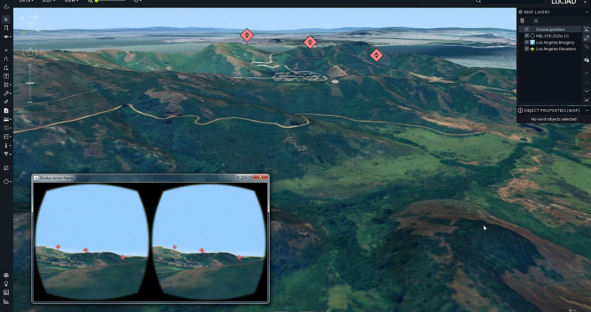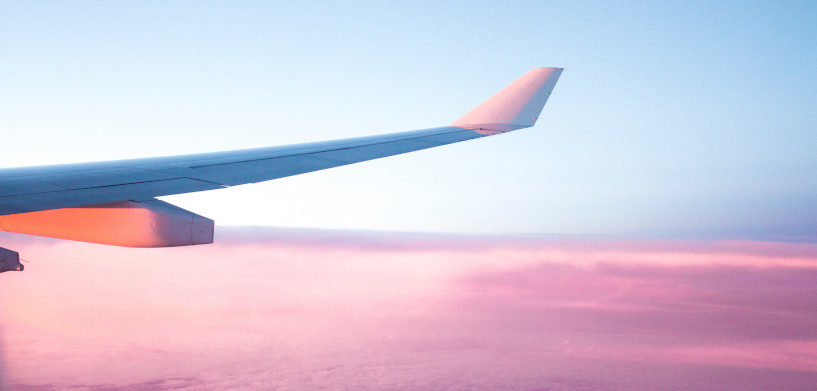Hexagon continually strives to be on the leading edge of innovation, which often means bringing features to the market before clear use cases have even been identified. But by offering these features in our products early, we create opportunities for integrators to discover and provide applications.
One such avant-garde feature  is the support for virtual reality (VR) devices and stereoscopic screens in LuciadLightspeed, part of the Luciad portfolio. With the release of the Oculus Rift virtual reality headset in 2016, Hexagon integrated support for VR into LuciadLightspeed to build curiosity about the uses of VR technology in defense applications.
is the support for virtual reality (VR) devices and stereoscopic screens in LuciadLightspeed, part of the Luciad portfolio. With the release of the Oculus Rift virtual reality headset in 2016, Hexagon integrated support for VR into LuciadLightspeed to build curiosity about the uses of VR technology in defense applications.
VR support is a simple extension of the standard 2D/3D view in LuciadLightspeed, so it’s available in the standard product. Implementations done on the 2D/3D view can also be applied to the VR view. With the included VR support starting in 2016, LuciadLightspeed users could immediately get started, put on the Oculus Rift headset and dive into a map.
Views with Fluid Motion
In essence, two views instead of one are rendered — one for each eye. The views are displayed on the special screens in the Oculus Rift headset so that only one image is shown to each eye. The Rift device feeds back information on head movement in real time to update these views, allowing users to look around in a map with fluid motion.
The same concept is applied for stereoscopic screens, the same screens that are used in cinemas and even in some TVs to create a 3D view out of flat images. With these screens, however, the image continually switches between two images — one view for the left eye and another for the right eye. Users wear special polarized glasses to filter the images so that each eye receives only the correct picture. The limitation of stereoscopic view is that it’s static; users are restricted to a screen and can’t look around as in VR.
Taccon FlightSim
One of the first companies to actually integrate this feature in a product is Taccon. Its FlightSim™ combines real-time, planning, modeling, and simulated data in one coherent display, enabling users to “fly the mission” in digital reality to optimally prepare for the real thing.
To achieve full immersion and get a feel for the action, users can put on the Oculus Rift headset and can fly missions based on realistic data. The VR experience can be further enhanced mixed reality, which means that digital information is incorporated — airspaces, restricted areas, or targets, for example.
FlightSim can also be used to plan missions. Command-level users have access to advanced geospatial analysis like line-of-sight and mission planning tools for drawing on the map using military symbols and tactical graphics. Because all functionality is contained in one tool that can switch between 2D, 3D, and VR, pilots can immediately give feedback on a mission plan. Commanders can then update it interactively.
Working Together to Improve
By offering the VR feature, Hexagon and Taccon have enabled users to get a feel for the endless possibilities it presents. The users can in turn provide feedback, closing the loop so we can continue developing the feature to perfectly align with the newfound and emerging needs of the defense market.
But that’s just one way that Hexagon technology has been used to close the gap between the digital and operational worlds. Learn more about the Luciad portfolio and what it can do, and watch the video to see a demo of LuciadLightspeed on the Oculus Rift.

















